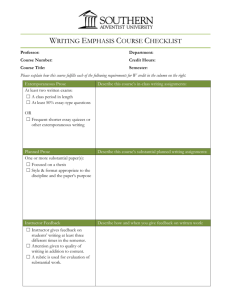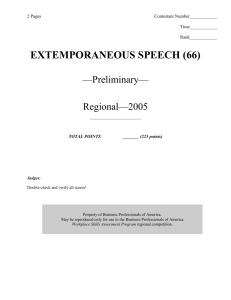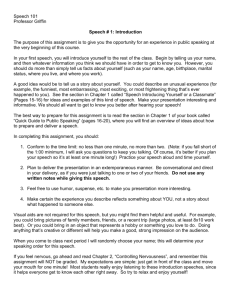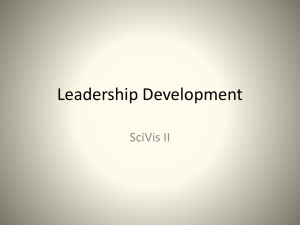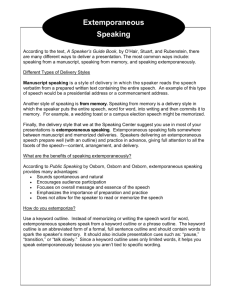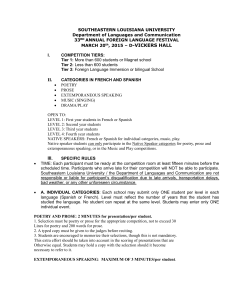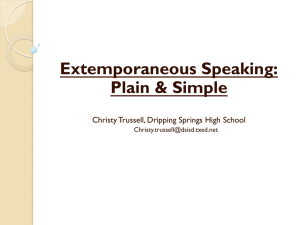Criteria for General Education Writing Emphasis Courses
advertisement
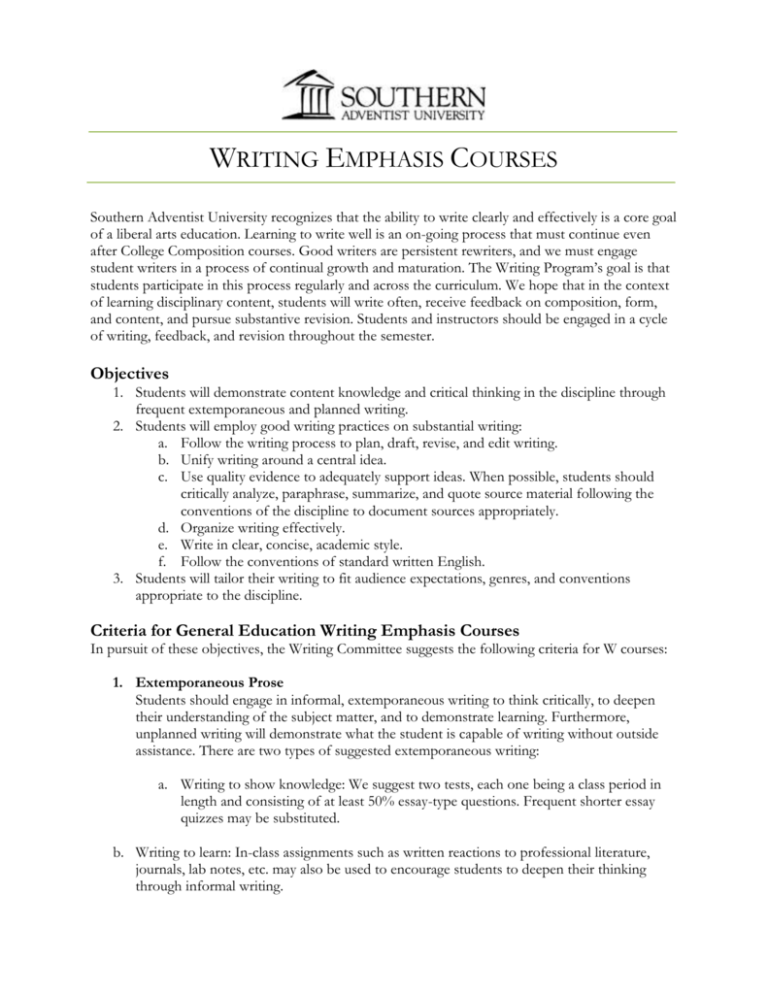
WRITING EMPHASIS COURSES Southern Adventist University recognizes that the ability to write clearly and effectively is a core goal of a liberal arts education. Learning to write well is an on-going process that must continue even after College Composition courses. Good writers are persistent rewriters, and we must engage student writers in a process of continual growth and maturation. The Writing Program’s goal is that students participate in this process regularly and across the curriculum. We hope that in the context of learning disciplinary content, students will write often, receive feedback on composition, form, and content, and pursue substantive revision. Students and instructors should be engaged in a cycle of writing, feedback, and revision throughout the semester. Objectives 1. Students will demonstrate content knowledge and critical thinking in the discipline through frequent extemporaneous and planned writing. 2. Students will employ good writing practices on substantial writing: a. Follow the writing process to plan, draft, revise, and edit writing. b. Unify writing around a central idea. c. Use quality evidence to adequately support ideas. When possible, students should critically analyze, paraphrase, summarize, and quote source material following the conventions of the discipline to document sources appropriately. d. Organize writing effectively. e. Write in clear, concise, academic style. f. Follow the conventions of standard written English. 3. Students will tailor their writing to fit audience expectations, genres, and conventions appropriate to the discipline. Criteria for General Education Writing Emphasis Courses In pursuit of these objectives, the Writing Committee suggests the following criteria for W courses: 1. Extemporaneous Prose Students should engage in informal, extemporaneous writing to think critically, to deepen their understanding of the subject matter, and to demonstrate learning. Furthermore, unplanned writing will demonstrate what the student is capable of writing without outside assistance. There are two types of suggested extemporaneous writing: a. Writing to show knowledge: We suggest two tests, each one being a class period in length and consisting of at least 50% essay-type questions. Frequent shorter essay quizzes may be substituted. b. Writing to learn: In-class assignments such as written reactions to professional literature, journals, lab notes, etc. may also be used to encourage students to deepen their thinking through informal writing. 2. Planned Prose Students should follow the writing process to plan, draft, and revise one or more substantial paper(s) focused on a thesis and presented in a style and format appropriate to the paper’s purpose. a. Suggested examples of planned prose assignments include: Research papers or research proposals Article critiques Literature reviews Book reviews Case analyses and studies Original and creative narratives Original interpretive essays Lab reports in essay form Other types of writing at the discretion of the professor 3. Feedback a. In order to allow for self-evaluation and growth, the students’ writing should be reviewed/critiqued by the instructor at three different points during the semester. b. Feedback should be clear, extensive, and timely. c. Students should have the opportunity to respond to feedback in a subsequent draft, paper, or other assignment. d. Instructors should include comments on unity, support, organization, style, and mechanics in addition to content. e. Rubrics should be used on substantial writing assignments so students can see a clear justification for the grade they receive. We suggest using the SAU Writing Scoring Guide as a starting point. 4. Weight Grades on written work should comprise a substantial part of the overall course grade. (For a 3-credit course, the suggested minimum weight for written work is 25%.) 5. Course Size Giving quality feedback on written work is time intensive. In order to provide each student with sufficient attention, the suggested maximum enrollment for W courses is 25 students. 6. Syllabus Statement Each Writing Emphasis course must include the following standard statement in its syllabus. In addition, the syllabus should include a course-specific statement that clearly outlines how this course will fulfill the intent of the Writing Program. “This is a Writing Emphasis course; therefore, special attention will be given to the process and quality of written work. Any written work is expected to focus on a central idea and be supported by adequate development in organized paragraphs. Writing Emphasis courses require both extemporaneous writing and at least one substantial planned paper. In order to allow for self-evaluation and growth, the instructor will give constructive feedback at least three times during the semester.”
